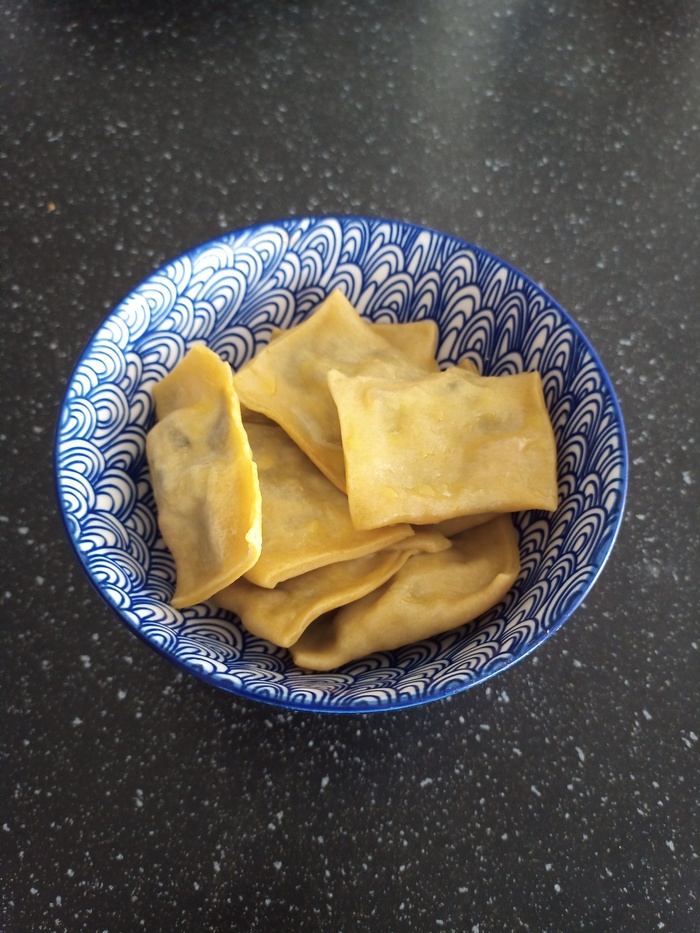
The choice for ravioli is very limited in supermarket:
And that’s almost all.
I wanted a pasta machine, first because it helps you to make your own linguine at home, but also because it let you customize your ravioli. You can make them without a machine, using a rolling pin, but you need very clean space in your kitchen, you have to clean next the excess of flour, and last it takes you a lot of time to flatten the dough.
Making them at home (out of the fact that you can select the flavor) allow you to save money. You can check the previous article which is about the cost of the ingredients vs the supermarket price, to check how much money you save when making pasta yourself.
For 3-4 persons:
For the dough:
3 eggsweight of eggs x 2 of flour, which is approximatively 300gsaltFor the pesto filling:
250g of ricotta100g of pestoblack peperNote: If you want to change the recipe, the amount of filling must be similar in weight to the dough, so around 300g-400g. If you have too much filling left at the end, it might be because the dough was not thin enough.
You just have to mix all the ingredients together. It is recommended to use a robot / kneader (here a Thermomix).
Before:
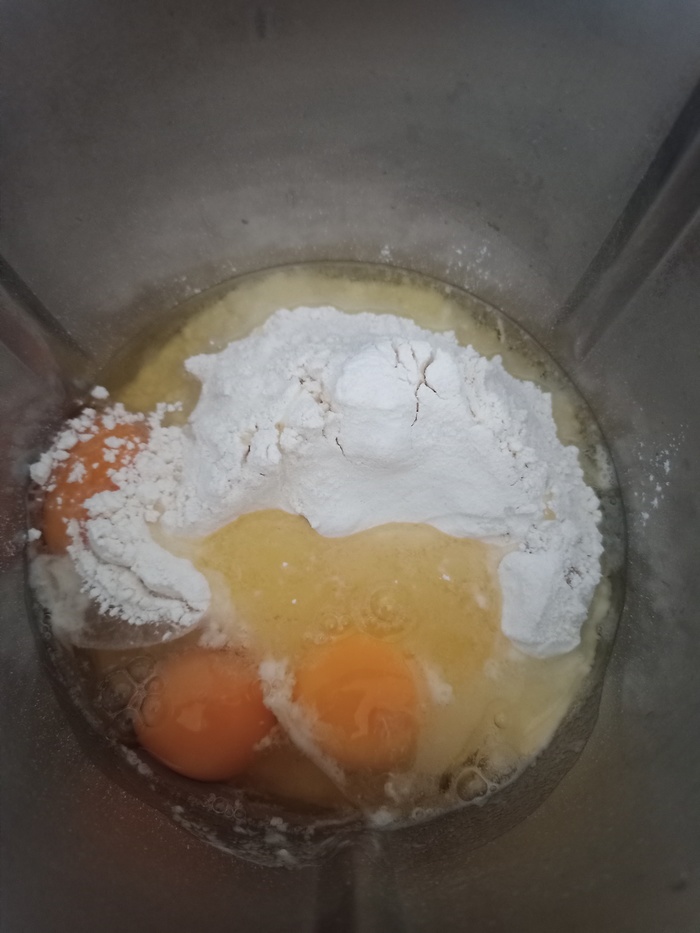
After:
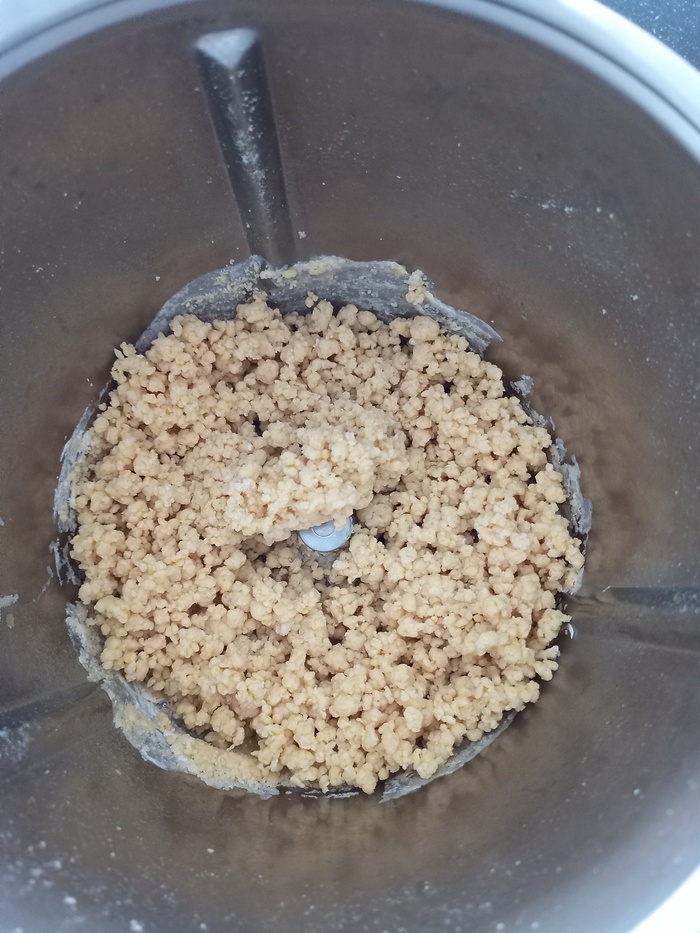
Then, make a ball.
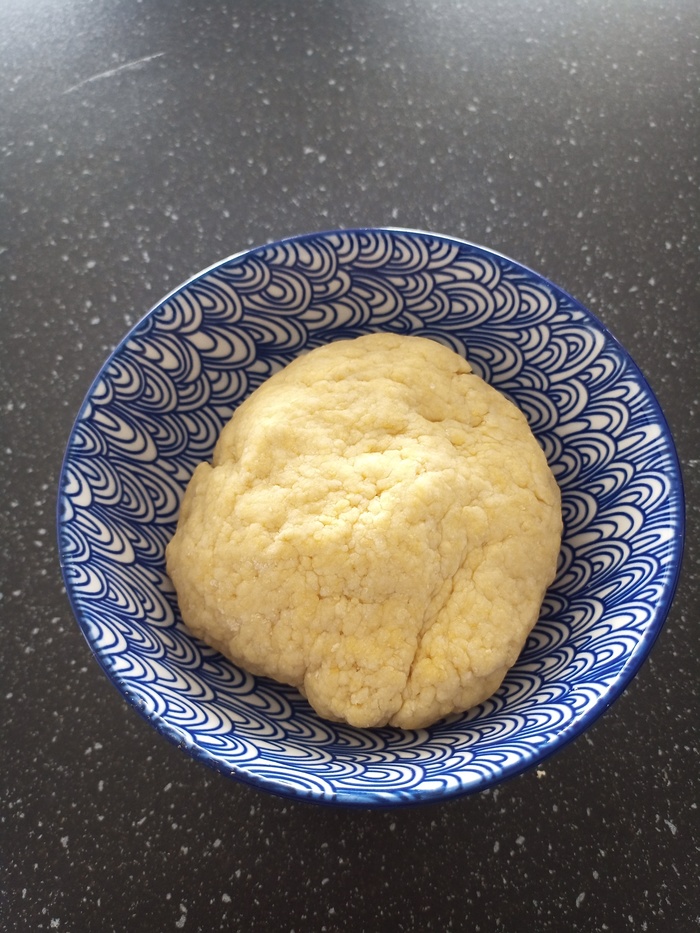
When mixing the ingredients, the robot can heat the temperature of the dough. When hot (this is not that “hot”, max 40°C), it is more difficult to manipulate the dough which tends to stick to the hand. It is recommended in that case to wait for 30 minutes. To avoid drying, use cellophane to cover the dough.
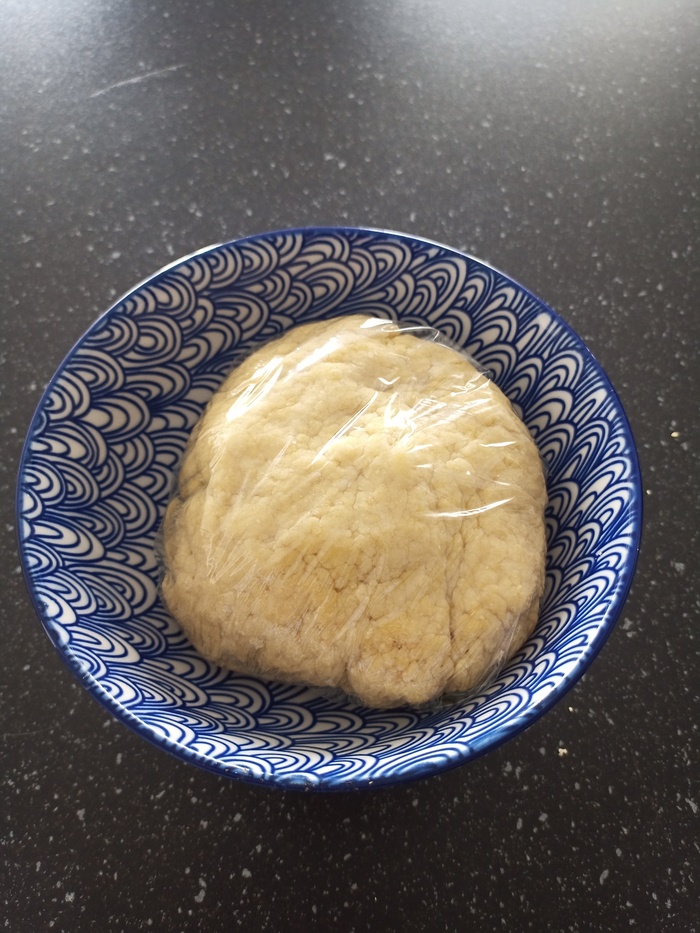
During the waiting time, prepare the filling. Mix in a bowl the different ingredients.
This is the fun part.
Install the machine. Here, I have an Atlas Mercato machine, an Italian brand.
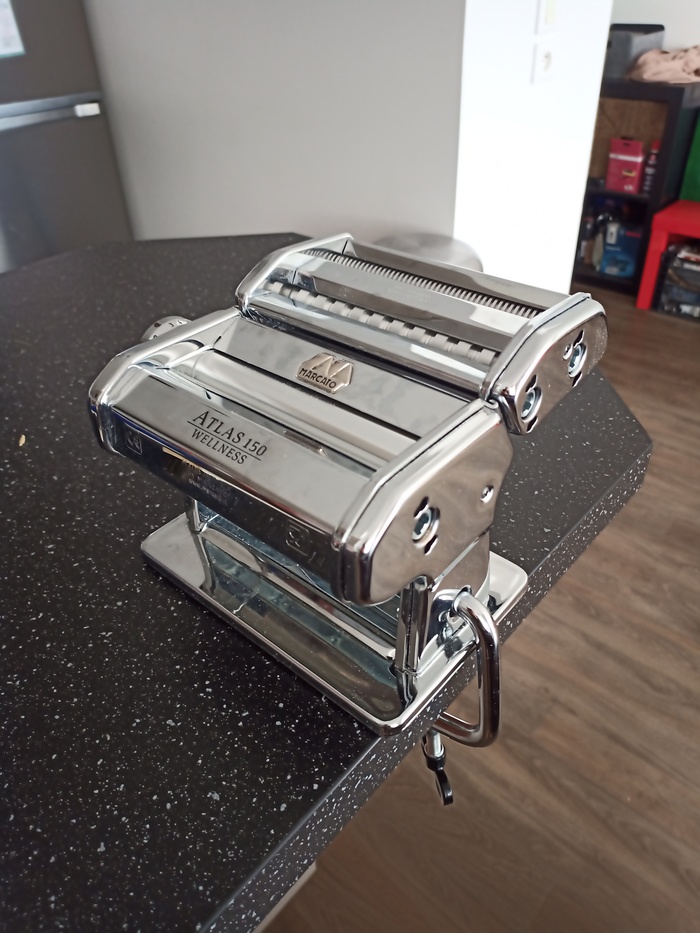
I divided my ball of pasta in two. To simplify the use of the machine, I shape them into rolls of similar diameter. When I will flatten them, I will get the same approximate width.
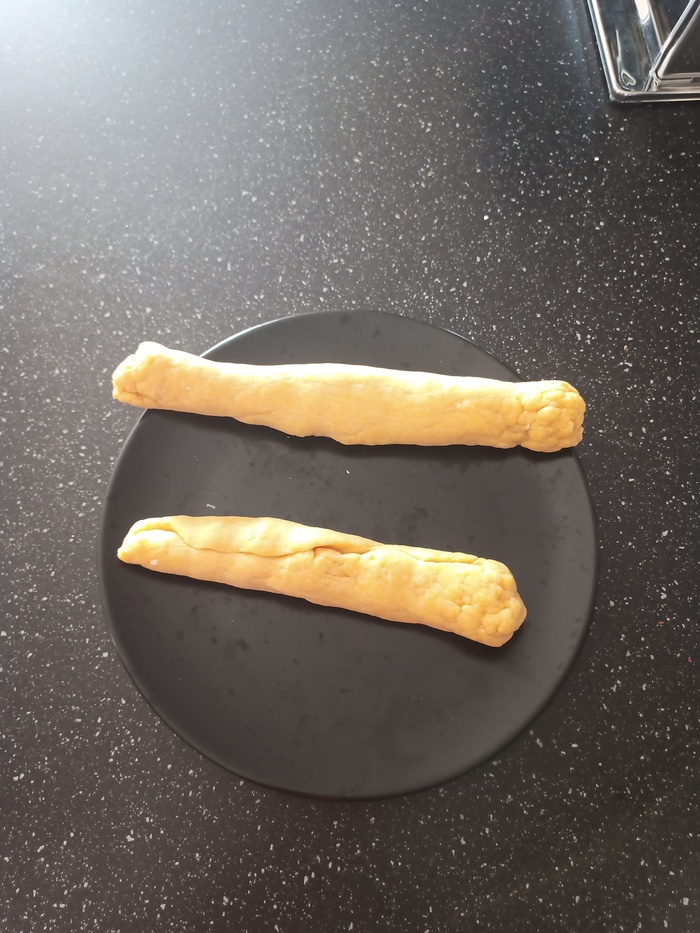
Before putting it in the machine, I flatten it by hand. Otherwise, it cannot go into the machine.
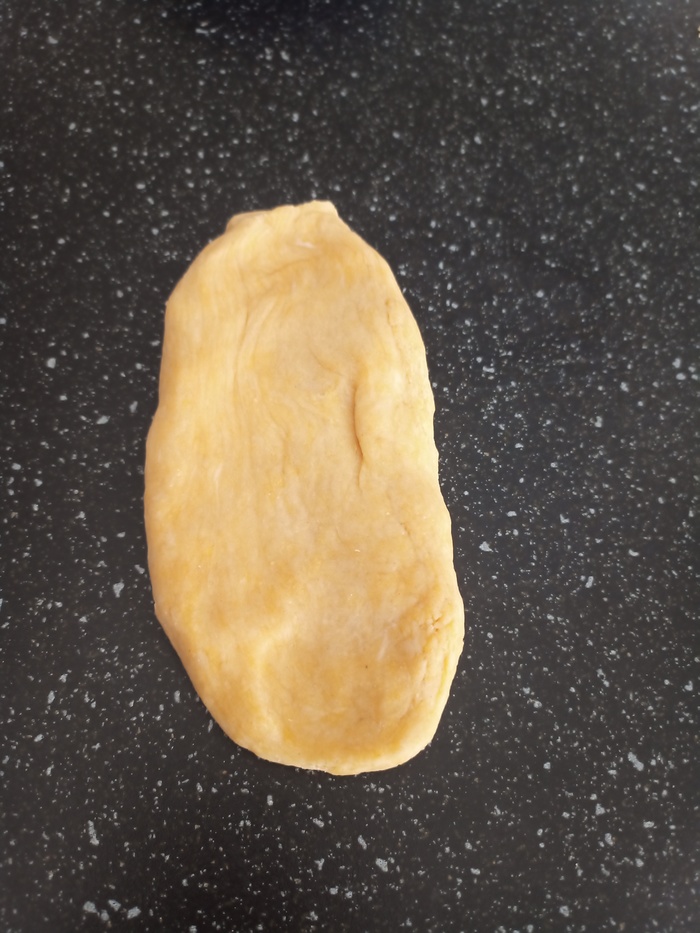
The thickness of the dough can be adjusted on the machine.
I do a first move on the machine with thickness parameter at 0, then parameter at 4.
First move:
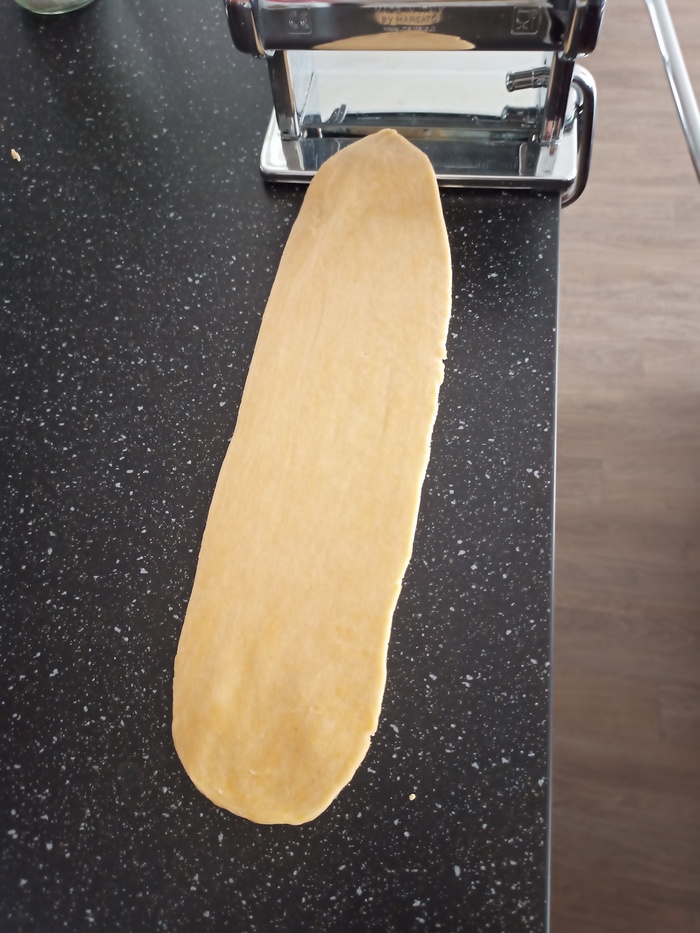
If we compare to the original roll, look at the difference. The flatten dough is two times larger:
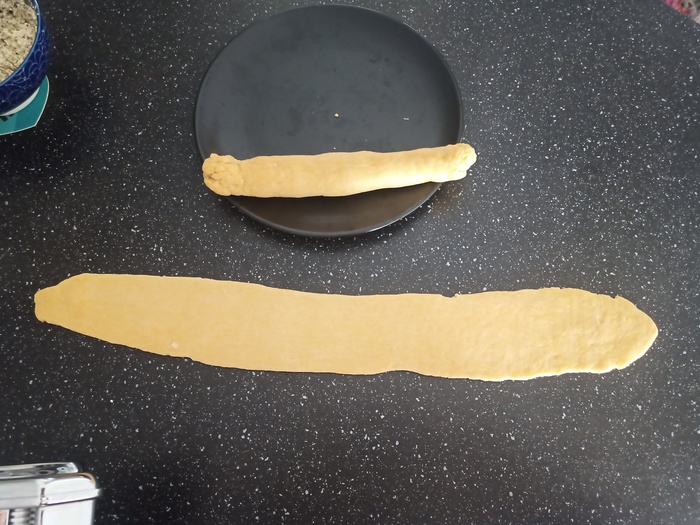
It is better to cut in two the dough to make the second move easier:
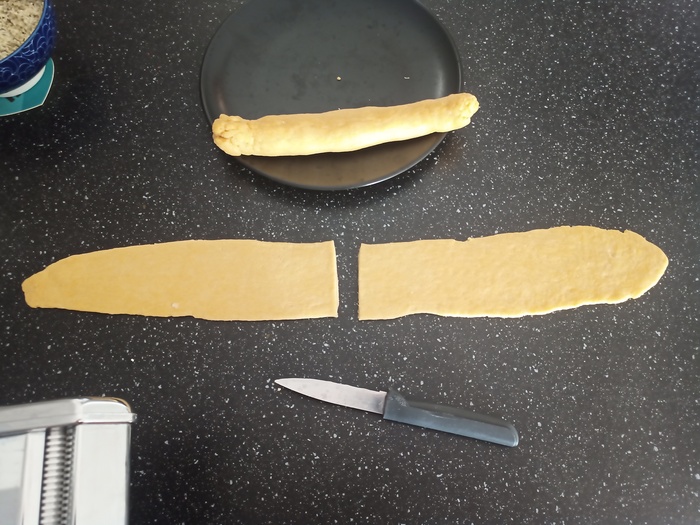
Second move:
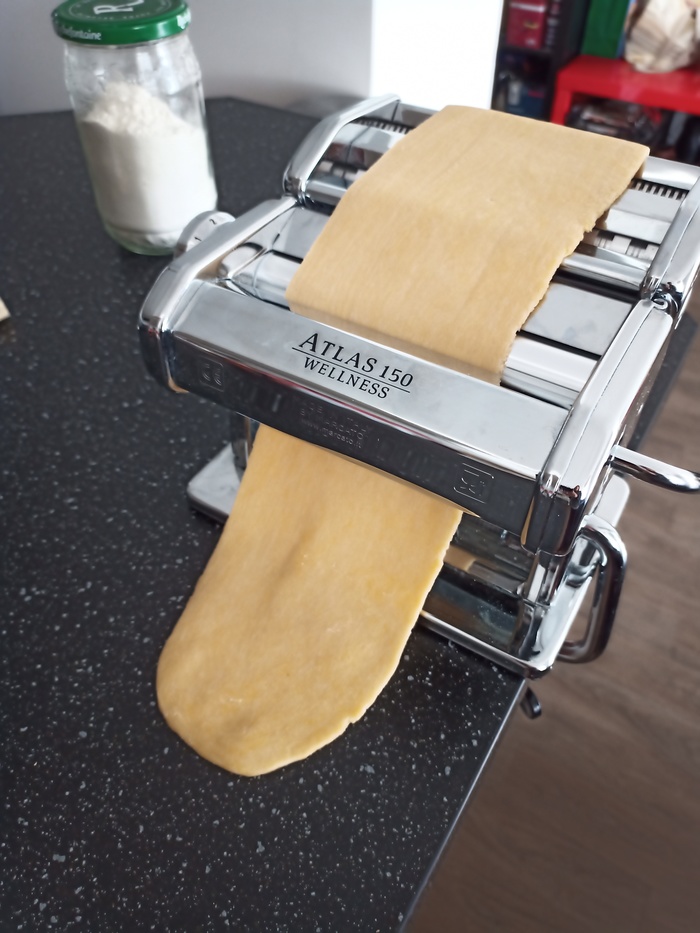
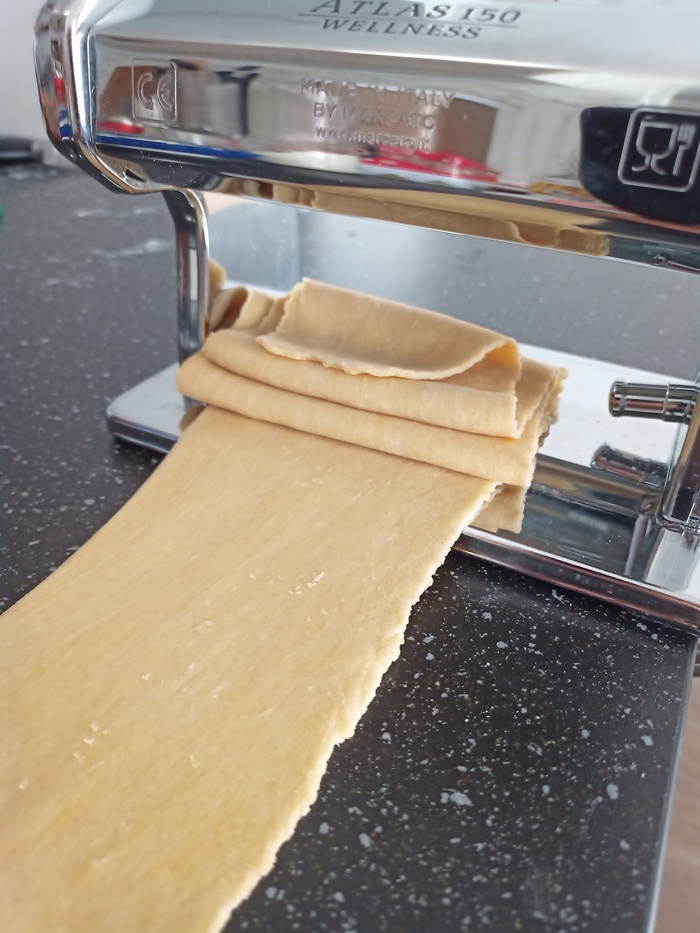
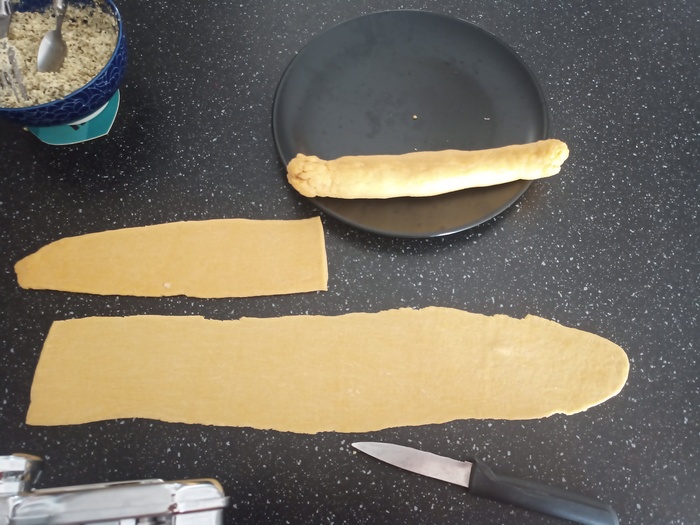
This is effortless, and done very quickly.
Put flour on you table to avoid the dough to stick (but do not put flour on the top of the dough !).
Put a tea spoon of filling regularly spaced on the dough on the first half.

Then, close the ravioli by putting the other half of dough on it.
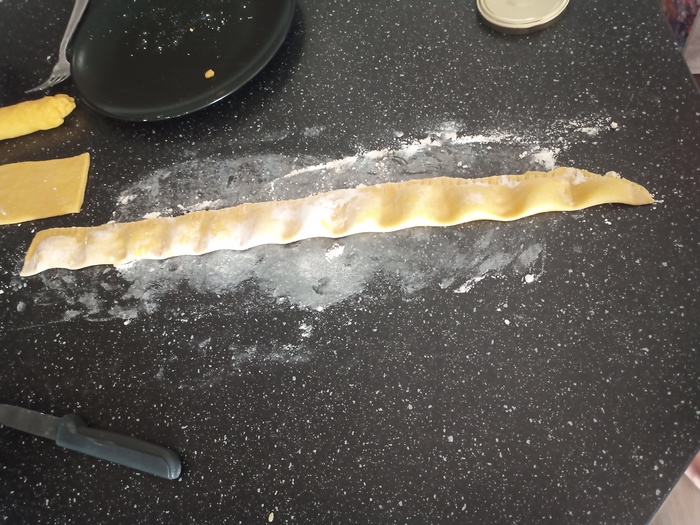
There is no need to use water or eggs to seal the top and bottom piece of dough. If you did not flour top of the dough, the sealing must be fine. Just press on the extremity.
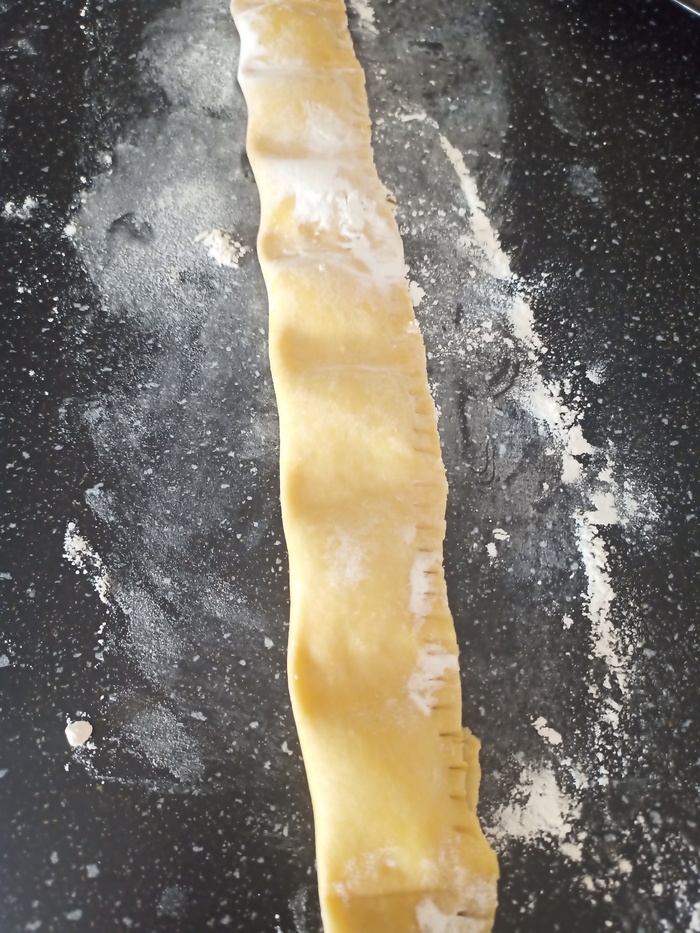
Then, cut the raviolis, and put them in a floured plate before cooking them. Here, I don’t have a special tool, I used a knife so the edges are straight.

Put the raviolis into a plate with a little bit of flour. You can superpose raviolis, but don’t forget flour.
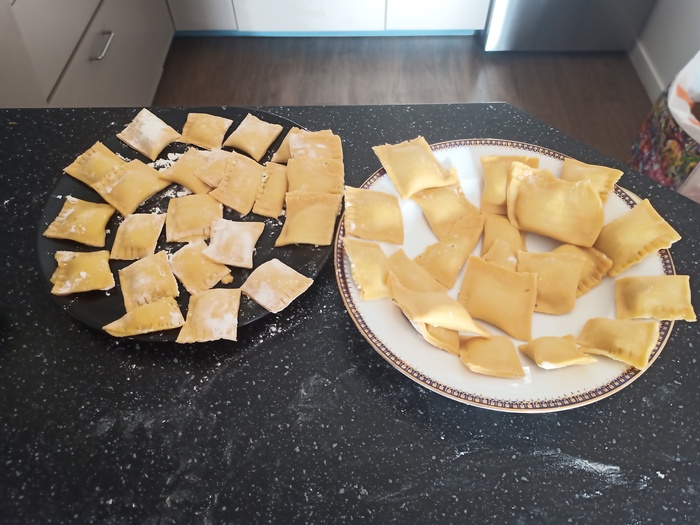
Boil salted water.
Then, depending on the size of your pan, put a dozen of raviolis for 6-7 minutes (this time depend on the thickness of your raviolis).

Cover the water to avoid loosing too much energy.
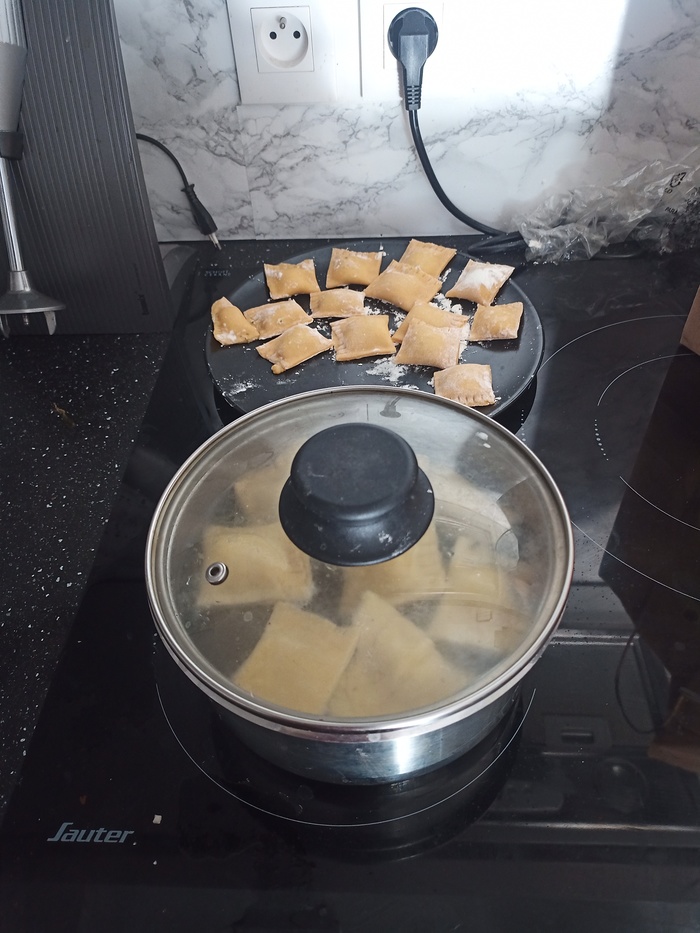
Then, remove the raviolis from water one by one, and let them dry for a few minutes (cover them to avoid them to cool down).
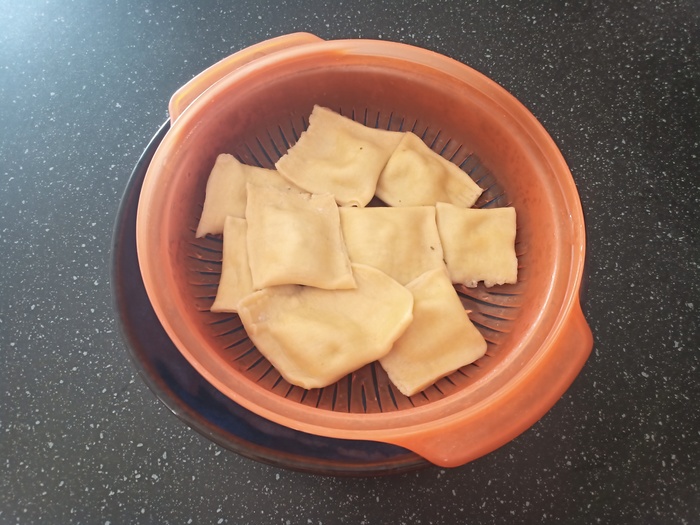
Add a sauce if you wish and enjoy !

>> You can subscribe to my mailing list here for a monthly update. <<